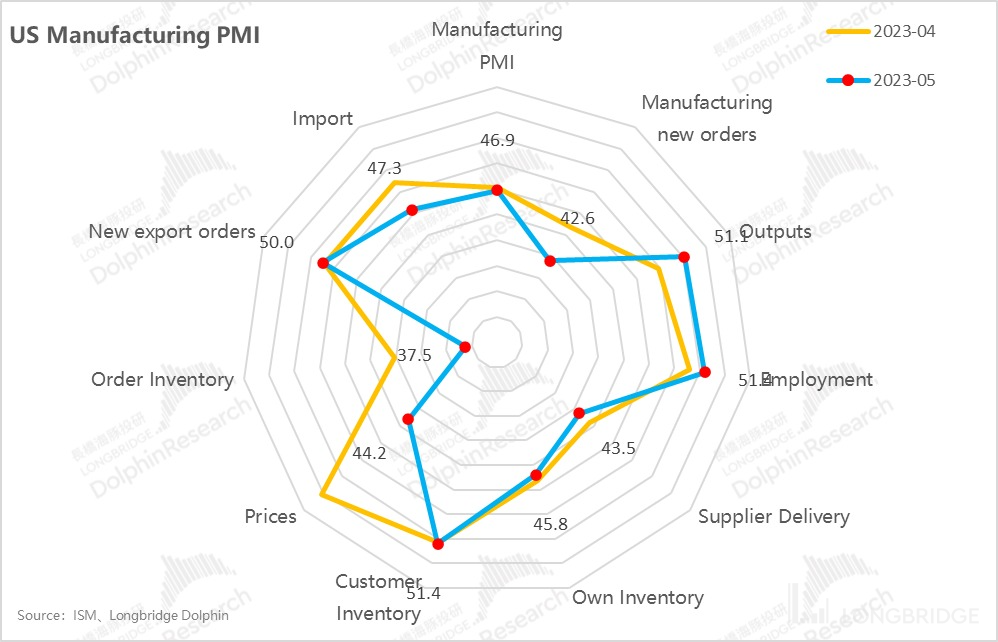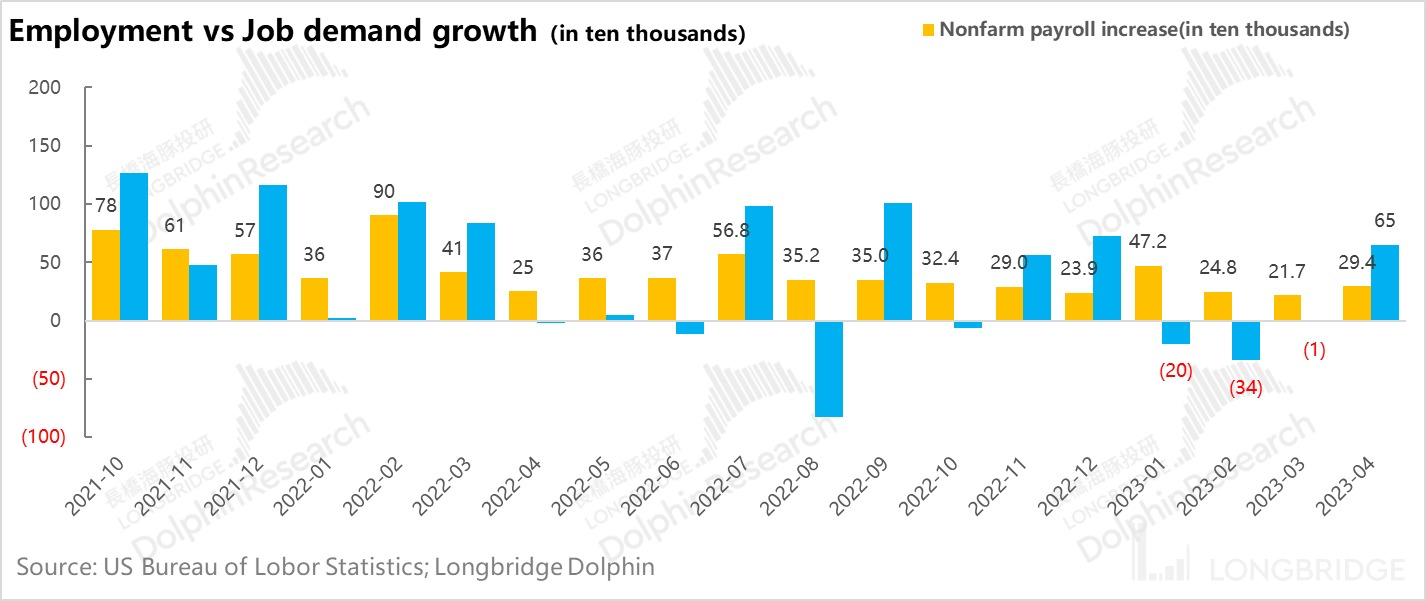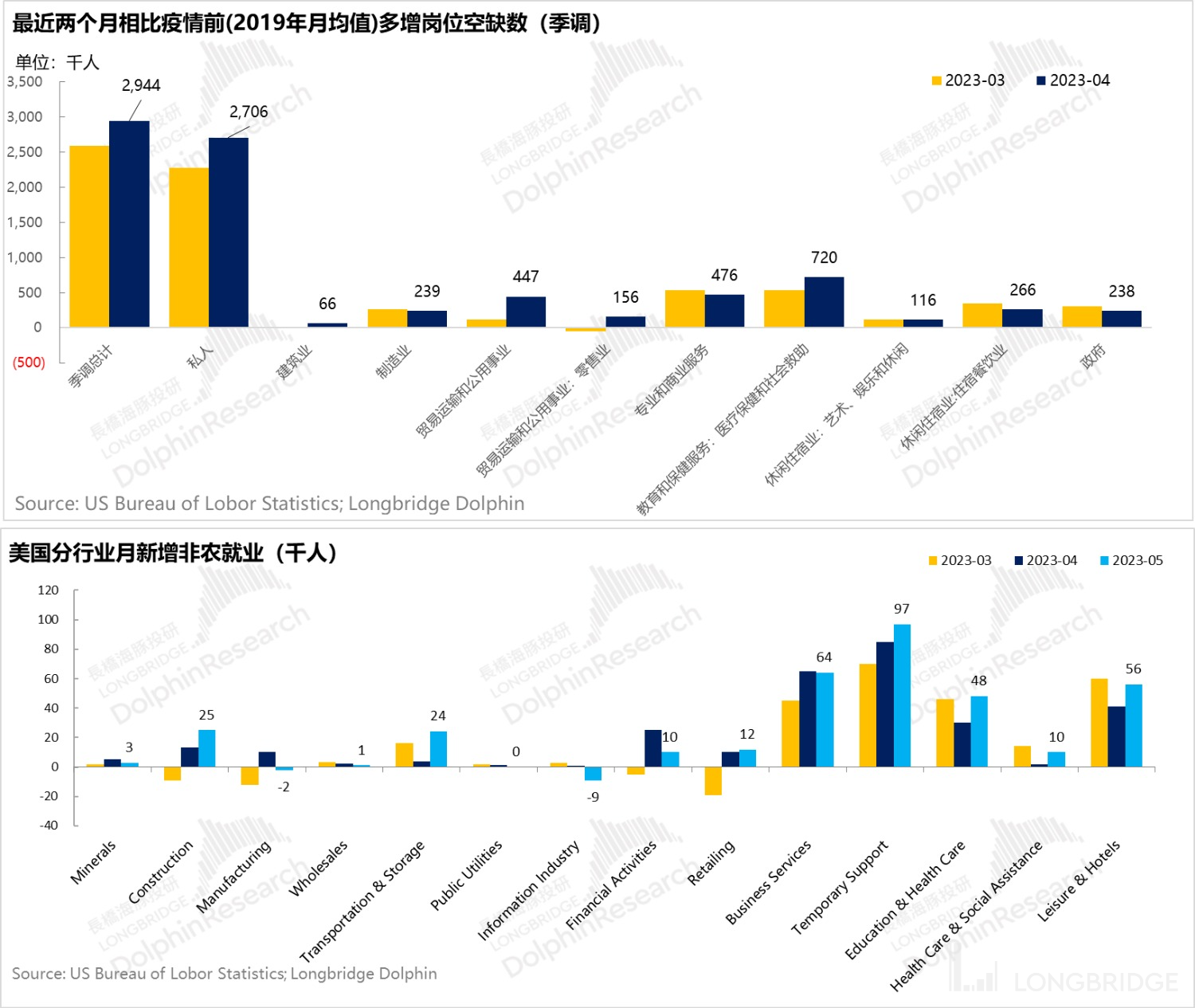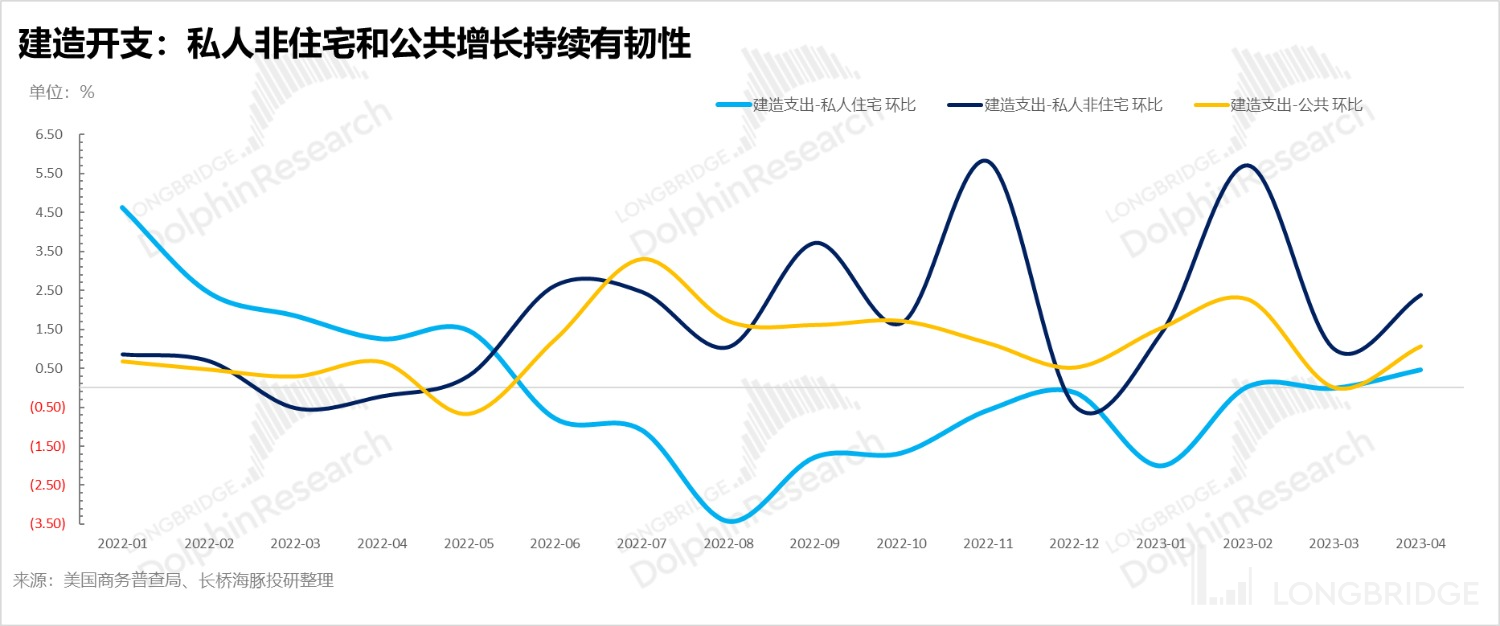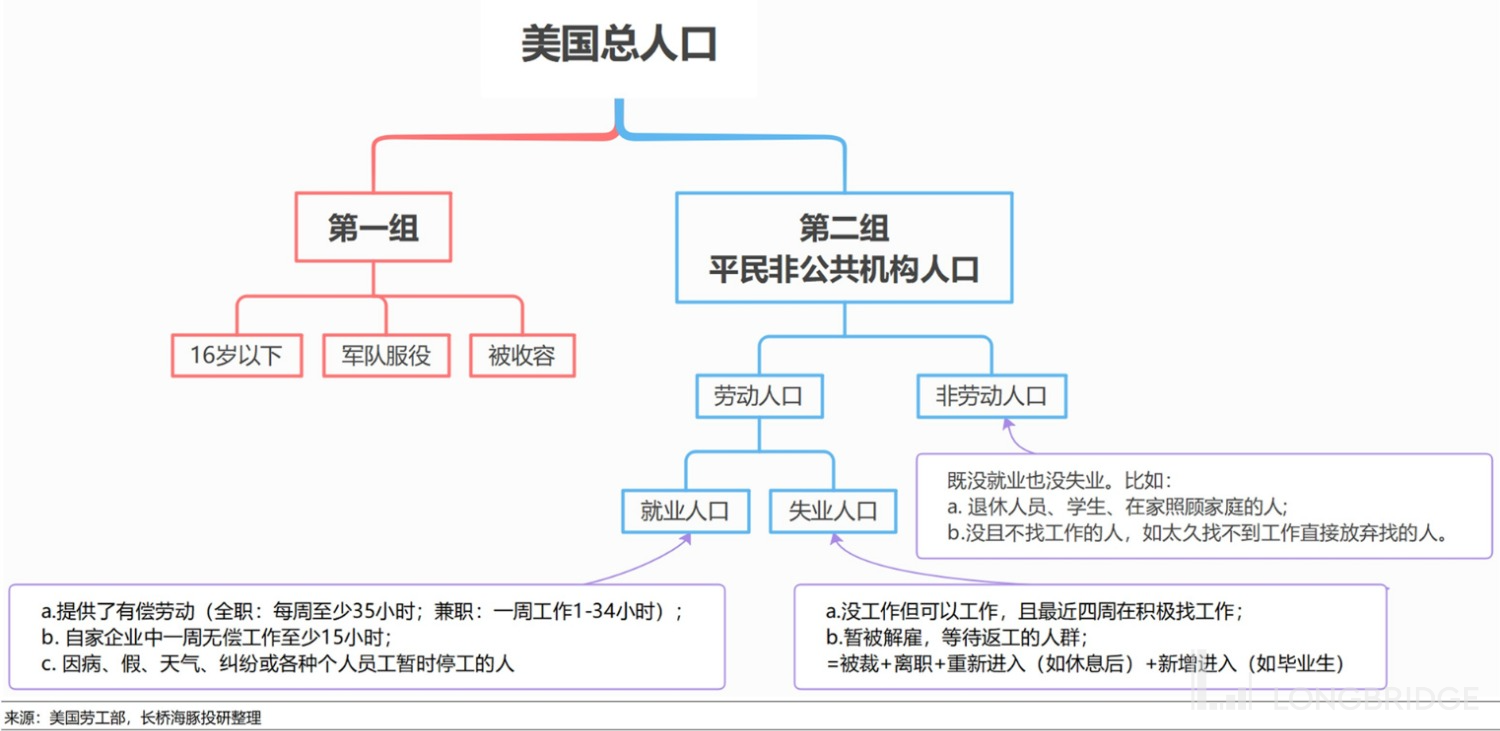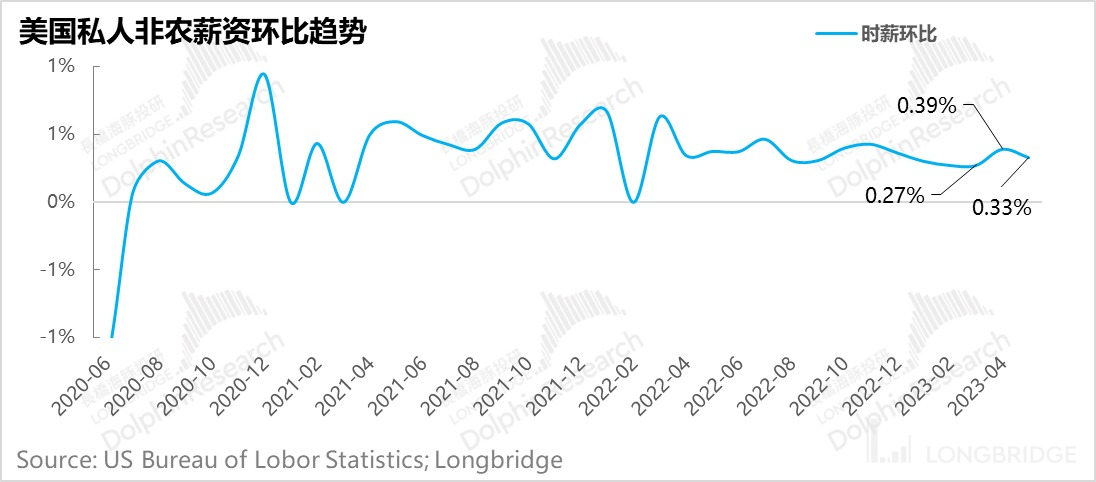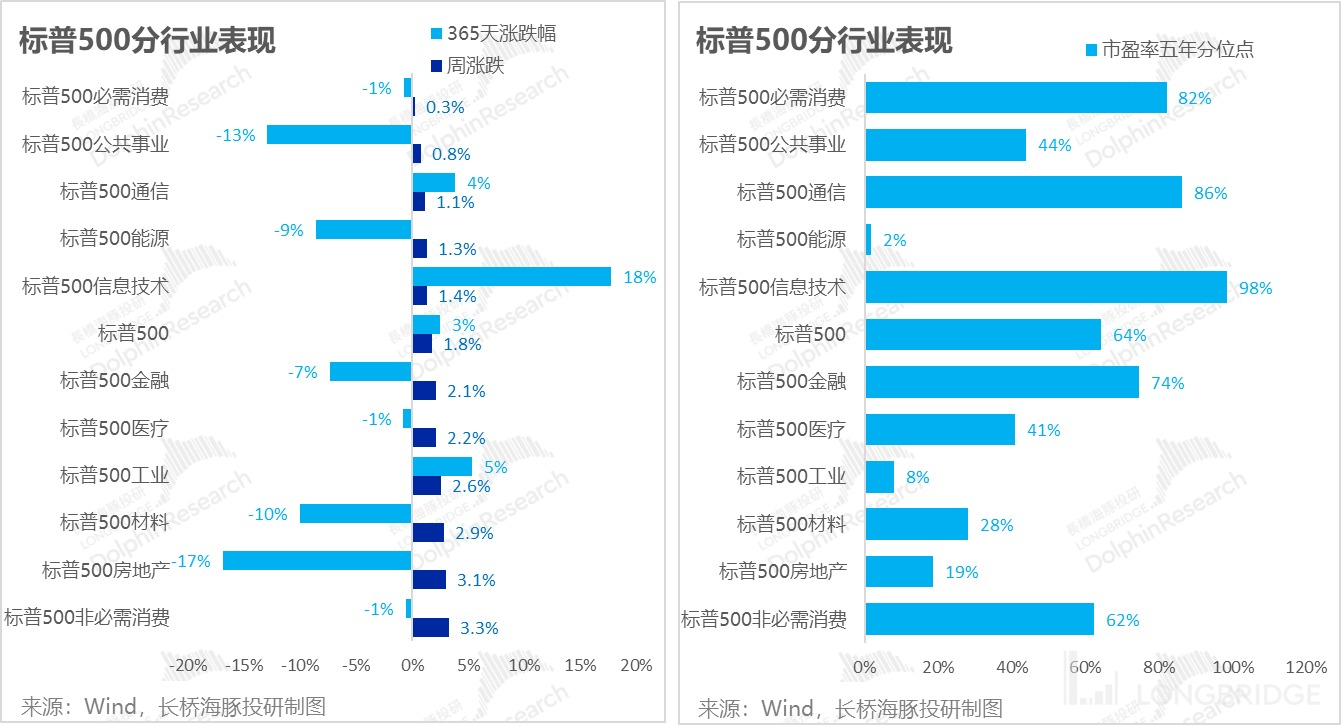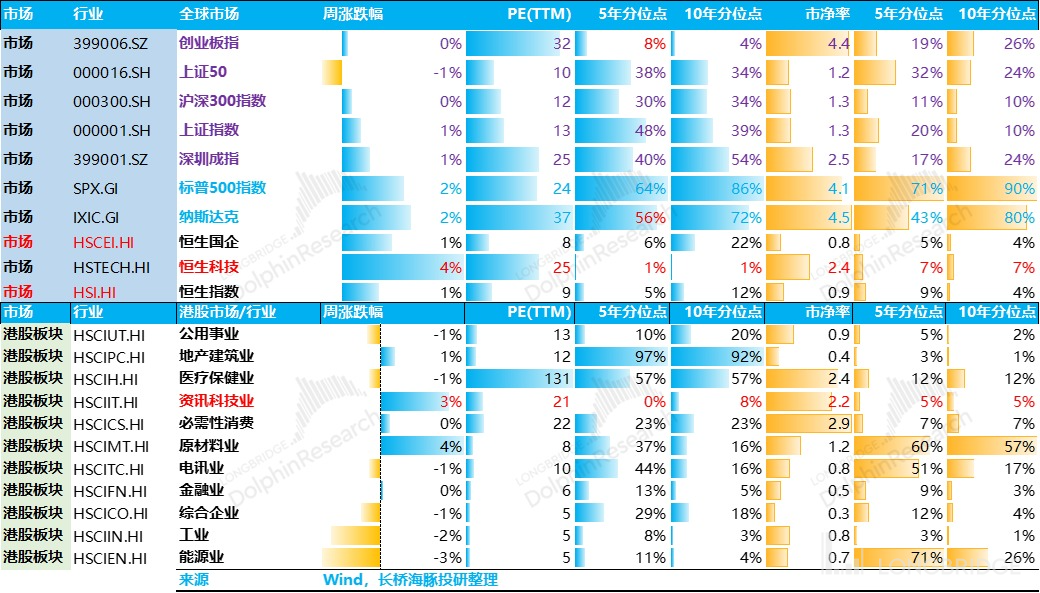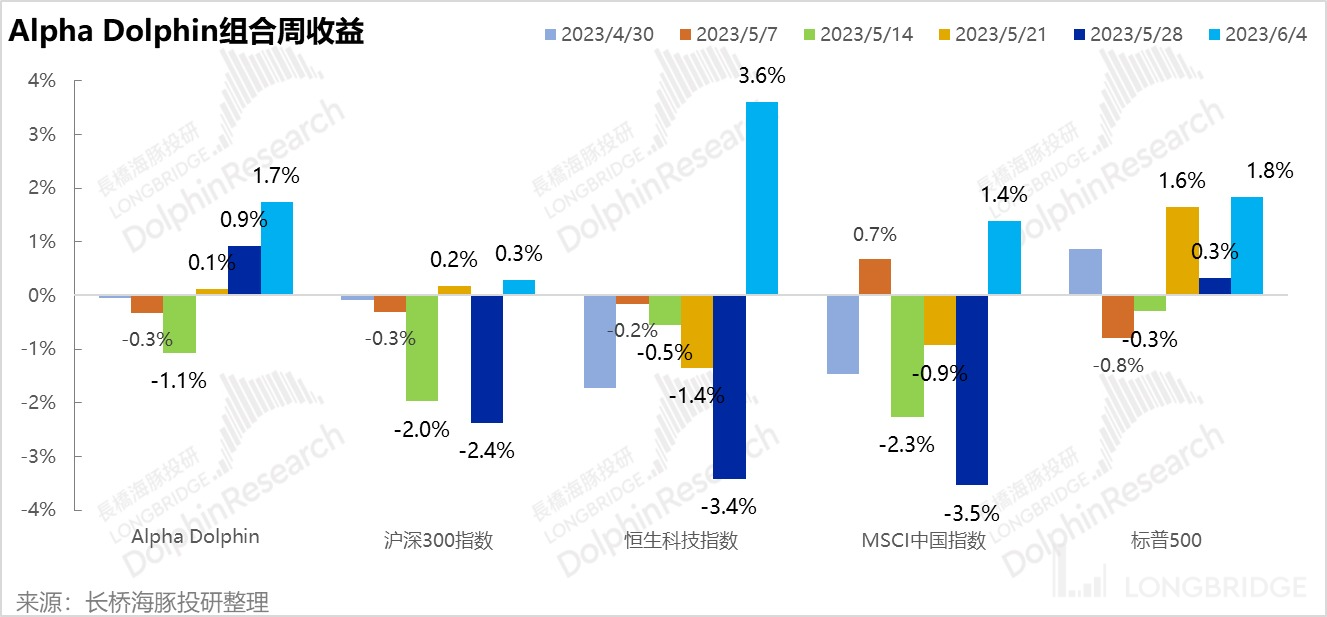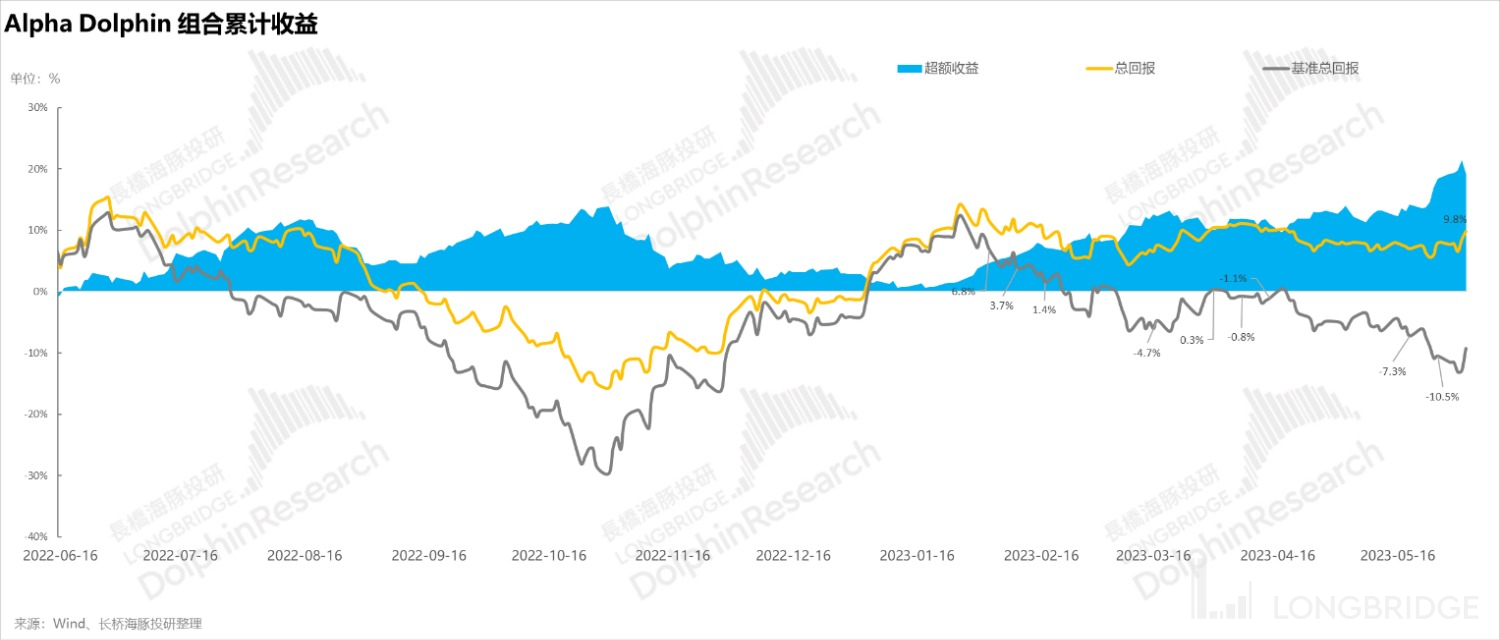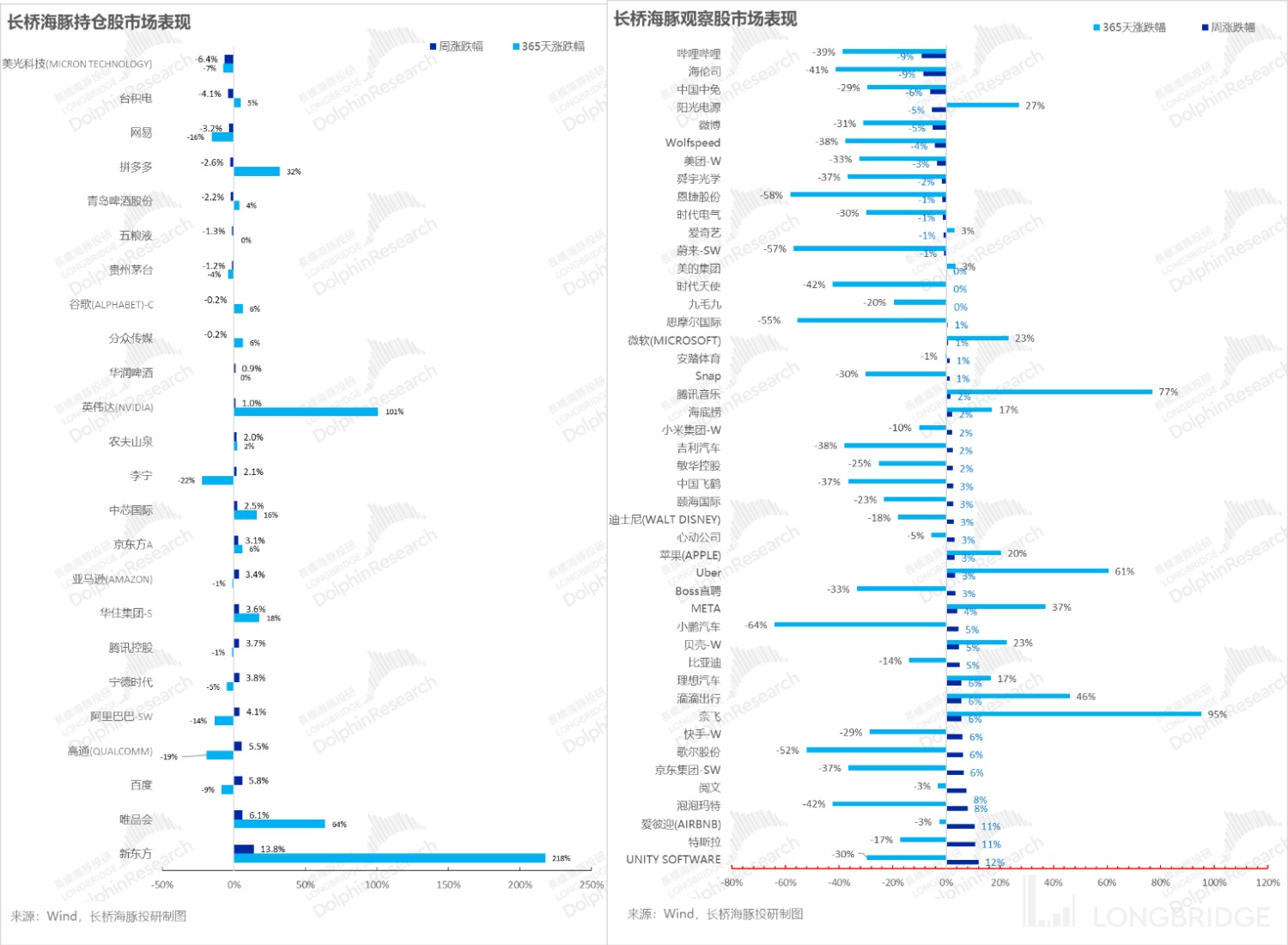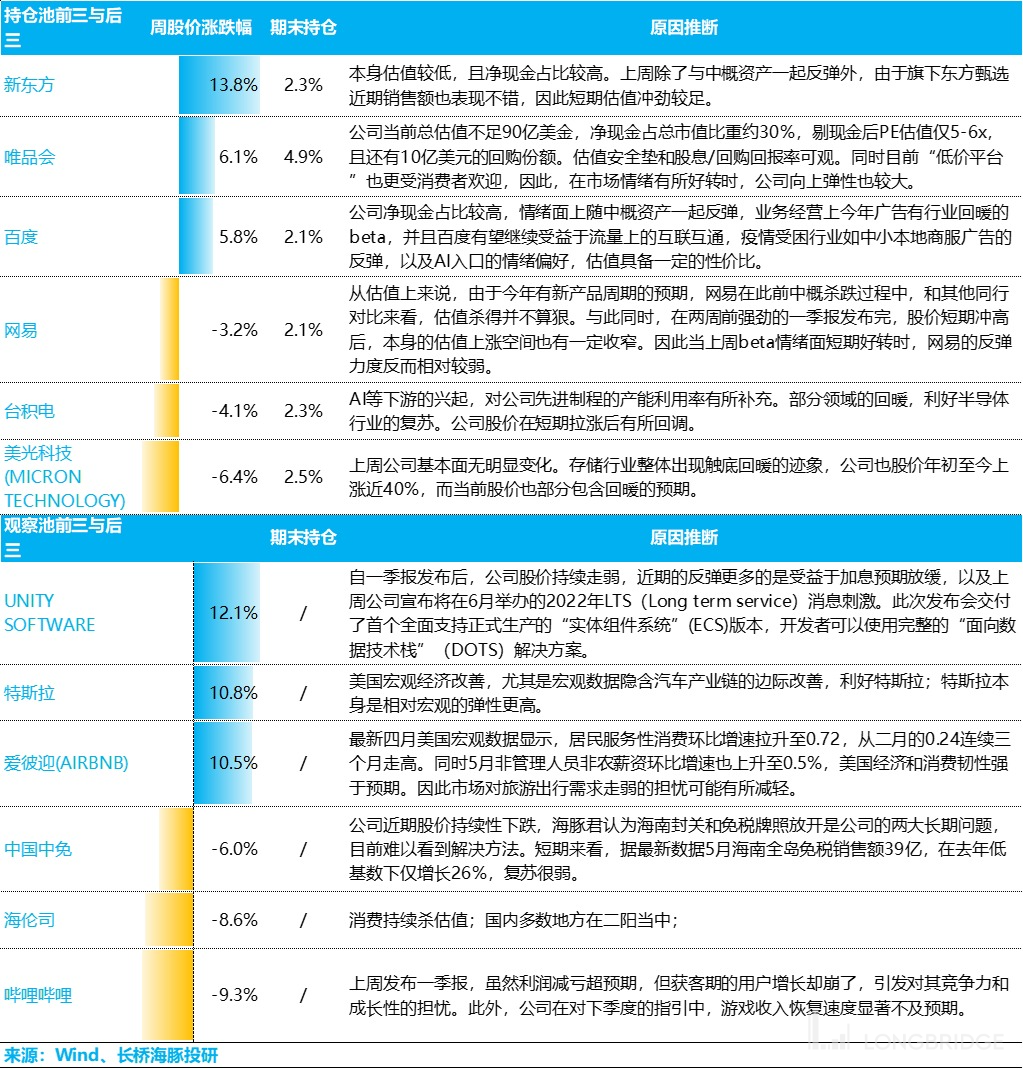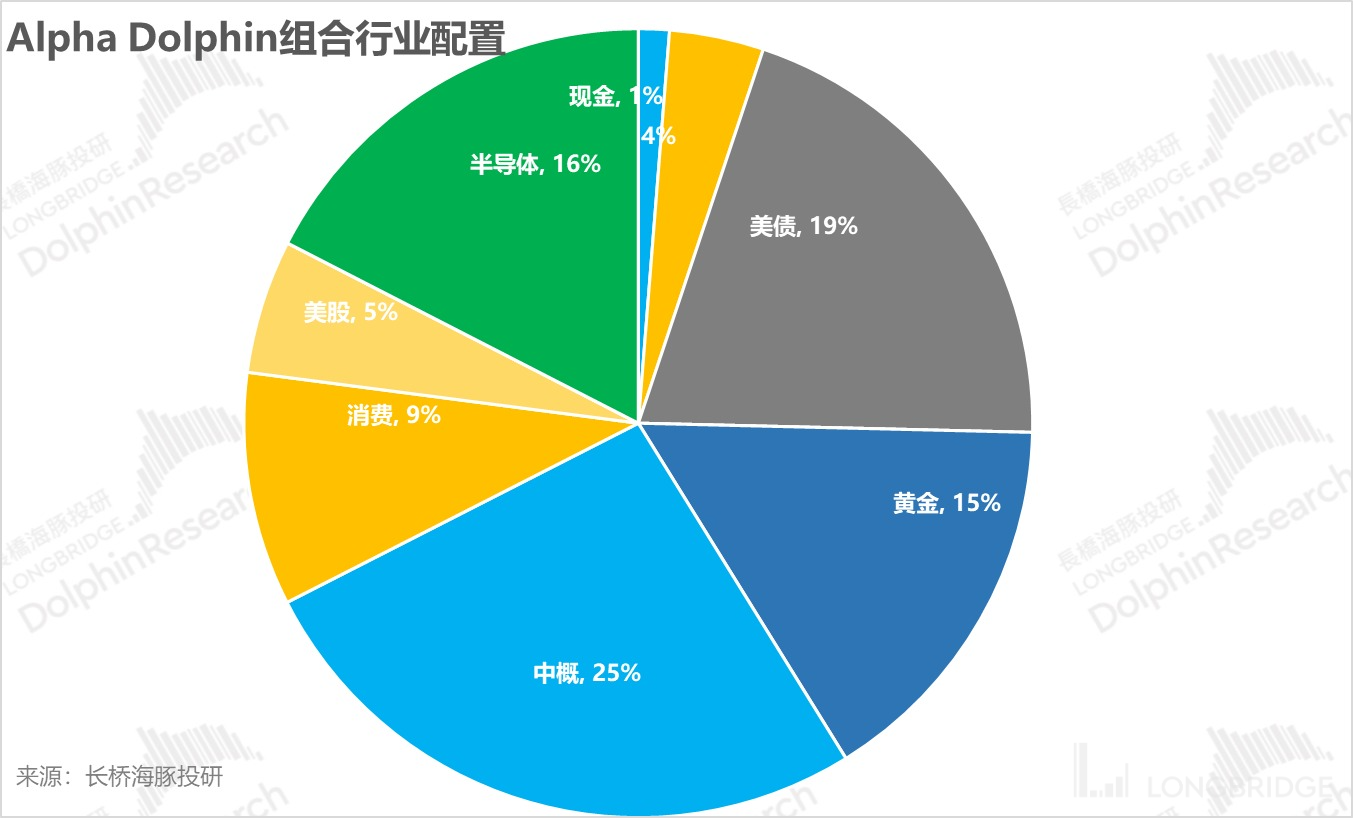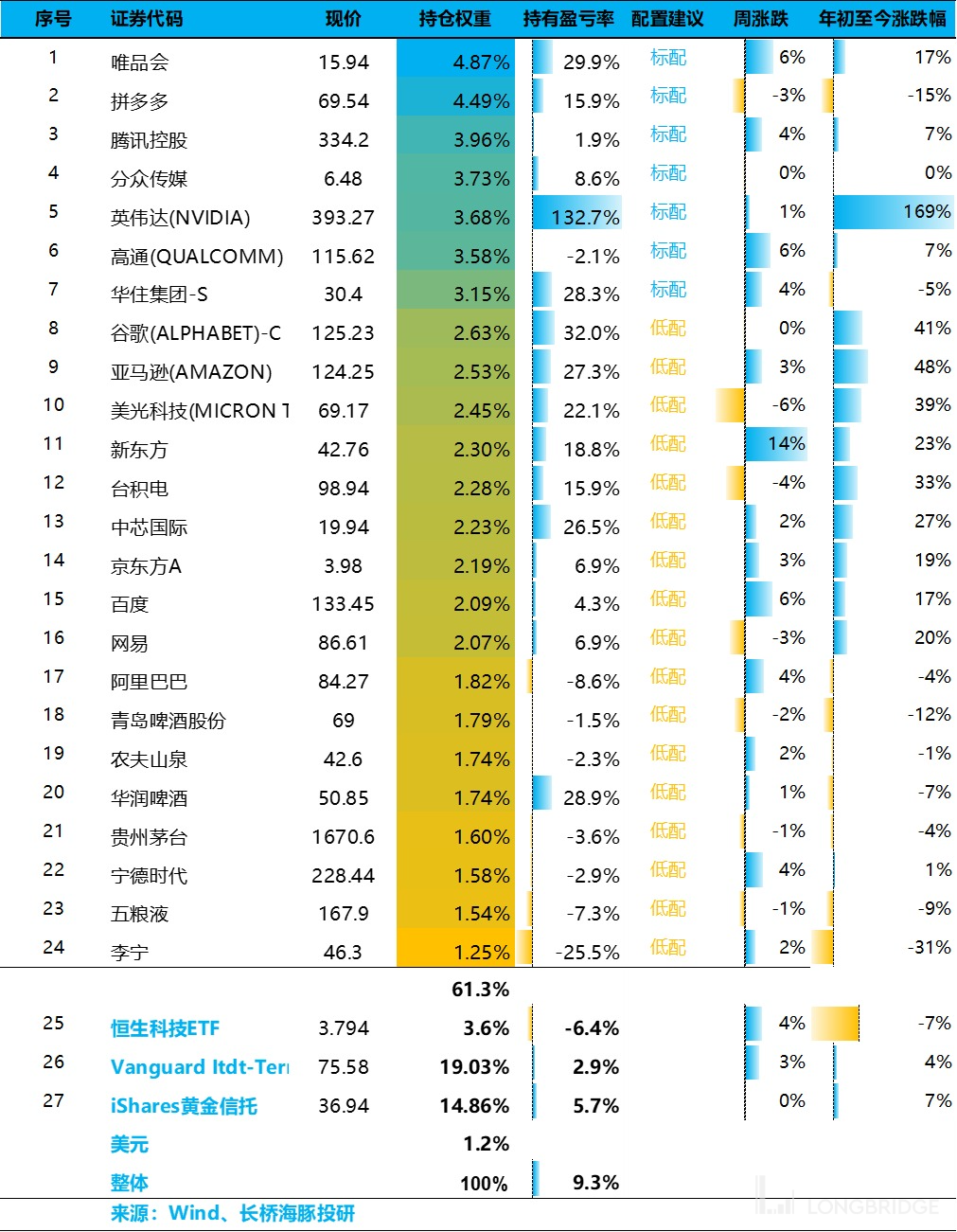Frenzy US Market? Don't Get Excited as Traps are Ahead
Hello everyone, below is the core information of portfolio stragegy by Dolphin this week:
1) "Bifurcation" of the US economy: Manufacturing is cold while consumption is hot; white-collar is cold while blue-collar is hot. The US May manufacturing PMI and employment data reflect a very bifurcated US economy: the manufacturing industry took a break in April and continued to shrink in May. However, behind the explosive employment data, it implies that the overall economy is still relatively good. Looking at the sub-industries, the known problems are still in the commodity manufacturing industry, IT industry, and commercial banking industry, while the service industry has returned to its bullish state after a slight bump.
2) Currently, the pricing of the US stock market trading has begun to point to the US economy fully adapting to the "high-interest" environment, and the economy has sailed out of the "reef" zone. The implication is that the US economy has stepped onto the long-term inflation center stage, and the nominal GDP growth rate has also stepped up.
However, in the case of zero growth in residents' actual income and purchasing power still being eroded by inflation, and the pricing of US stocks being fully optimistic about the economic outlook (technology stocks are close to the 85%-100% valuation percentile of the past five years), it is necessary to consider the possibility of further interest rate hikes by the Federal Reserve or the risk of economic recession after a long period of high-interest standby.
3) There is no particularly important macro data in the US stock market this week, but there are heavyweight credit and social financing data in China, as well as CPI/PPI data. In the case of sufficient stock price and market expectations, the risk of credit and social financing continuing to be lower than expected is relatively controllable. The main focus is on the risk of CPI/PPI continuing to be low.
4) Last week, Dolphin reminded that May is the beginning of a new macro variable release period, and the relative valuation of Chinese and American assets has been fully adjusted. After the risk changes, two undervalued Chinese assets were added to the portfolio, among which New Oriental and Vipshop contributed significantly, withstanding the pressure of the US technology warehouse holding back, and ensuring the relative excess returns of the virtual portfolio (Alpha Dolphin portfolio up 1.7% vs MSCI China up 1.4%).
The following is the detailed content:
I. The US: Bifurcated economic data in May
Starting from last week, the US entered the release cycle of May economic data. Two "prophetic" indicators that can gauge the US macro economy in May were released-employment/wages and PMI.
Dolphin previously mentioned that during this period, due to the market fully trading the logic of "the US is declining while China is rising", any slight macro changes in May's macro data will bring certain adjustment pressure to this trading direction.
1) Manufacturing contraction in progress
First, let's look at the US May manufacturing PMI: After a slight improvement in the contraction zone in April, it is still in the contraction zone in May, but has re-entered a slightly worse state.
Among them, the most important new orders of manufacturers and order backlog continue to shrink in the contraction zone, while prices have directly shifted from expansion to contraction. At the same time, customers' inventories are expanding, and the marginal expansion is still ongoing. It implies that in the case of relatively weak downstream demand, upstream is still actively destocking, but the speed is still relatively slow. 2) Manufacturing vs. Service Industry: One Cold, One Hot, Blue Collar Workers in Demand, Layoffs Leave a Void
Looking at the latest April non-farm job vacancies, American companies were aggressively hiring and reducing job demand in the first three months of this year, but in April they began to significantly increase new job postings, with approximately 650,000 new jobs added in that month alone.
Specifically, looking at the monthly increase in employment, in addition to the education and healthcare industries having a high demand for new positions, the construction industry and trade and transportation also seem to have increased their job demand again, indicating that after a brief adjustment period, demand has returned, causing the labor market's supply and demand to tighten again (one unemployed person corresponds to 1.78 job openings, compared to 1.67 in March).
In May, under the tight supply and demand, non-farm employment surged again, with 339,000 new jobs added in a single month, far exceeding Dolphin's benchmark scenario assumption of around 250,000.
Looking at the breakdown of new employment, in various industries:
a) Manufacturing employment: basically shrinking across the board, confirming the downward trend of the manufacturing PMI. The entire manufacturing industry, except for electrical equipment, continues to have a net reduction in employees, including durable goods manufacturing such as computers, communication equipment, semiconductors, furniture manufacturing related to real estate, and non-durable goods manufacturing such as food and textiles.
b) Construction industry: no layoffs, but accelerating hiring. The expected high interest rate to suppress real estate demand and further transmit to the upstream construction industry chain has not yet occurred. From the recent evolution of the pace, the construction industry is still accelerating its expansion.
At the same time, looking at current construction spending in the United States, although private residential construction, which accounts for 44% of total construction spending, is beginning to slow down, private non-residential and public construction spending, which account for 55%, have been growing positively on a month-on-month basis and have not slowed down. This may be related to attracting specific high-end manufacturing industries back to the United States.
c) Service employment: still rapidly filling positions. Currently, the information technology and finance industries in the service sector are still experiencing significant contraction, and the poor performance of these two industries is already known. However, the expansion of other essential industries in the service sector, such as private education, hospitals, medical services, and the restaurant industry, is still very evident. 3) Why is the employment rate booming while the unemployment rate is rising?
This month, the unemployment rate and non-farm employment figures are seriously at odds: non-farm employment has reached a new high, while the unemployment rate has accelerated to 3.7%. The main reason for this is that in addition to the 97% of non-agricultural employment in the United States, the country's employment statistics also include agricultural employment, self-employment, individual businesses, volunteers, NGO employees, and active military personnel, which account for about 3% of the total labor force in the United States.

In the case of a continuous stagnation in labor force participation rate for several months, combined with the continuous contraction of residents' operating income in recent months, it is possible that those who were originally self-employed or individual businesses in non-farm employment may have started working for others and become part of the non-farm employment population.
If we combine the booming non-farm employment this month, we can see that the hourly wage growth rate did not accelerate with the increase in non-farm employment, and the seasonally adjusted month-on-month rate fell slightly from 0.39% last month to 0.33% (corresponding to a year-on-year decrease of 4%).
Behind this is the fact that the US job market in May was a high-flow market - high layoffs, high hires, white-collar layoffs or demand freezes, while blue-collar employment was good, and the final wage growth rate remained moderately rising, with long-term inflation expectations still anchored.
The 0.33% hourly wage growth rate in May, compared to the 0.32% core PCE month-on-month growth rate in April, means that if the core PCE does not fall, residents' real wage growth rate should still hover around 0%, which is consistent with the zero growth in residents' actual disposable income month-on-month in April.

Before the epidemic, US residents' disposable income maintained a year-on-year growth rate of 3-6%, and the current inflation level is still eroding residents' purchasing power. In the case of no major financial stability issues, if inflation continues to remain high, the market does need to price in the possibility of the Fed maintaining or even raising interest rates, otherwise the risk of stagflation will not decrease.
Currently, the market feels that consumption is strong and does not feel that per capita purchasing power is being eroded. This is mainly because the labor supply and demand contradictions are relatively serious in this economic cycle, and the prosperity of the quantity dimension (employment) has covered up the two fundamental price dimensions of disposable income (quantity dimension: employment population; price dimension: average salary).
Therefore, under the current circumstances, Dolphin believes that we need to pay attention to the risk of a pullback in the US stock market. For example, last week, in the S&P 500, in addition to AI-related technology, communication and other high-valuation sectors, relatively undervalued cyclical stocks such as real estate, materials, and industry have also started to rise.
Currently, the pricing of market transactions has begun to indicate that the US economy has fully adapted to the "high interest rate" environment, and the economy has sailed out of the "doldrums" zone. What lies ahead is smooth sailing, implying that the US economy's long-term inflation center has stepped up, and nominal GDP growth has stepped up. But in the case of zero growth in residents' actual income and continued erosion of purchasing power, it is necessary to consider the possibility of further interest rate hikes by the Federal Reserve, or the risk of economic recession after a high-interest rate standby, because if the Federal Reserve does not do so, there may be a risk of stagflation.

Looking back, under the current valuation, the Hang Seng Index and domestic asset price-to-value ratio have already been reached, and what needs to be waited for is the improvement of macro signals. This week, China will release CPI and PPI data, which are the core data that dominate the recent macro narrative. We still need to pay attention to the risks, because based on core price factors - oil prices, car prices, and food prices, it will still take time to improve on a month-on-month basis.
In addition, credit and social financing data this week also need to be closely watched to see if they can emerge from the low in April.

II. Portfolio Returns
After adding Chinese concept stocks to the portfolio the previous week, Alpha Dolphin made no adjustments on June 2. This week, the Alpha Dolphin virtual portfolio rose by 1.7%, outperforming the MSCI China Index (+1.4%), the Shanghai and Shenzhen 300 (+0.3%), and slightly lower than the S&P 500 Index (+1.8%).

From the beginning of the portfolio test to the end of last week, the absolute return of the portfolio was 9.8%, and the excess return compared to the MSCI China was 19%.

III. Individual Stock Profit and Loss Contribution
Last week, the Dolphin portfolio was mainly supported by the newly added high cash protection cushion Chinese assets, Xindongfang and Vipshop, while the originally overvalued US technology stocks were in a correction.
Looking at the rise and fall of the stocks in the portfolio, in addition to the service consumption implied by US employment data still being good, driving the rebound of high-elasticity US stocks. Overall, Chinese internet stocks are biased towards valuation correction, but stocks with poor fundamental repairs or competition expectations are still difficult to repair their valuations.

The specific companies with the highest rise and fall, the reasons summarized by Dolphin are as follows:

IV. Asset Allocation
This week, there was no adjustment to the portfolio. A total of 21 stocks or ETFs were allocated, including 7 standard-rated stocks and 19 low-rated stocks, as well as gold, US bonds, and US dollars.
As of last weekend, the asset allocation and equity asset holding weights of Alpha Dolphin are as follows:


VIII. Key Events Next Week
After Ctrip and NIO, the earnings season is over. The specific focus is as follows:

Please refer to the following articles for recent weekly reports from the Dolphin Investment Research Team:
"Purgatory vs. Carnival: What Are the US and Hong Kong Stock Markets Really Trading?"
"US Stocks Pulling Valuations, Hong Kong Stocks Killing Beta? Don't Despair, Reversal Is Coming"
"Putting High Interest Rates in Another Bank? The Probability of a Soft Landing Is Even Greater"
"ChatGPT vs. Performance List, Can Giants Support the US Stock Market?"
"Is the Promise of 'US Recession, China Recovery' Going to Be Broken?" app_id=longbridge&channel=t5163044&invite-code=276530)》
《 The direction of the US recession is set, it's just a small decline in mood, a big decline in health》
《 The collapse of US service consumption, is the US stock market celebrating?》
《Fed rate cut: just waiting for a moment when the US version of Yu'ebao attacks?》
《 Silicon Valley Bank's run crisis: Is the US recession going to run?》
《 After trading grabs the run, the world can finally breathe a sigh of relief》
《Inflation is confirmed? Adversity brings opportunity》
《 Put inflation aside for now, the signals in Alibaba and Baidu are more important》
《 Hong Kong and the US are both weak chickens, and the wolves are coming again?》《Puppet of High-Frequency Macroeconomics, US Stocks Are a Puppet Market》
《One Yang Line Changes Faith, Tesla Leads U.S. Stocks Back?》
《How Far is The Change of the U.S. Stock "Dangerous" Situation?》
《U.S. Stocks Did Not Have a Red Year-end, But Performance Hammer Is Just Around the Corner?》
《Peeling the Root of the U.S. Stock Stagnation》
《CPI has Fallen, Why is the Fed Still So Intense?》
《Is it Really So Easy to Eliminate Service Inflation? Beware of Market Overcorrection》
《Has Hong Kong Stocks Finally "Stood Up"? Independent Market Can Still Bounce A Bit More》
《The Darkest Hour Before Dawn: Attitude Matters in Darkness or Dawn》
《U.S. Stocks "Struck" Reality, How Long Can Emerging Markets Bounce?》
《Global Valuation Repair is a Joy? There Are Still Hurdles in Performance Check》》《China's Asset Violence Boosts, Why the Ice and Fire of China and the US》
《Amazon, Google, Microsoft's Superstars Fall? The Meteor Shower of US Stocks Still Needs to Fall》
《Behind the Expectation of Policy Turning: Unreliable "Strong US Dollar Fund" GDP Growth?》
《The Southbound Acquisition vs. the Northbound Frenzy, It's Time to Test "Steadfastness" Again》
《Slowing Down Rate Hikes? The American Dream is Shattered Again》
《 Reacquaintance with a "Iron-blooded" Federal Reserve》
《 Sad Second Quarter: "Eagle's Voice" is Loud, and It's Difficult to Cross the Collective》
《Falling to Doubt Life, Is There Still Hope for Desperate Reversals?》
《 The Federal Reserve's Violent Hammering of Inflation, Domestic Consumption Opportunities Have Come?》
《 The World Has Fallen Again, and the Shortage of People in the United States is the Root Cause
《The Federal Reserve Becomes the Number One Bear, and the Global Market Collapses》 One bloodbath caused by a rumor: risks have never been cleared and sugar can be found in glass slag
Layoffs are too slow to pick up enough, and the United States still has to "decline"
Raise interest rates in the second half, "performance thunder" opens
China assets at present: "No news is good news" for US stocks
Growth is already carnival, but is the United States really in decline?
Is the United States in 2023 in recession or stagnation?
American oil inflation, China's new energy vehicles become bigger and stronger?
The Fed raises interest rates faster, and opportunities for Chinese assets come instead 《US Inflation Goes Crazy Again, How Far Can Bounce Back Go?》
《This Is The Most Down-To-Earth, The Dolphin Investment Portfolio Has Started》
Risk Disclosure and Statement of this Article: Dolphin Research Disclaimer and General Disclosure




